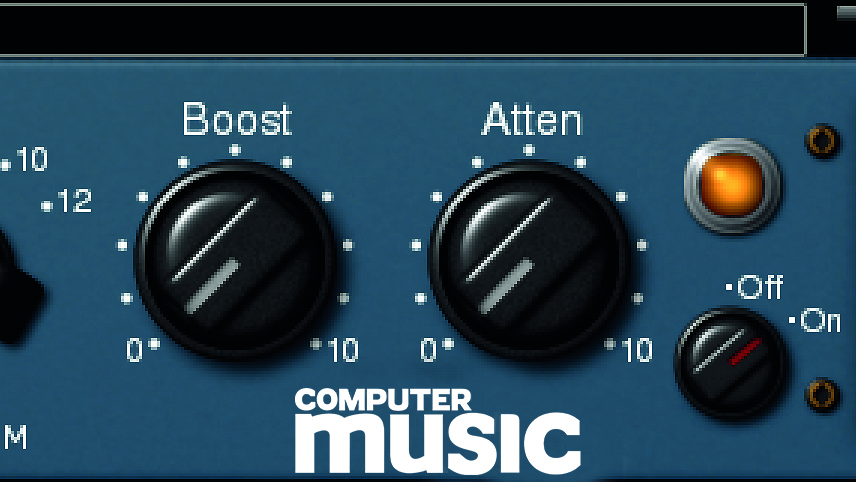12 tried and tested retro sound sound design tricks
A dozen things you need to know about going old-school

Today's best soft synths come bursting with bells and whistles, but sometimes, all you need is an old-school sound design trick or two to get what you're looking for.
Here are a dozen tried and rested retro tricks that synthesists have been using for years, and are still as valid as they ever were.
1. Design time
In the heat of writing, we often reach for a ready-rolled preset to keep us in the creative flow. Instead of trying to design sounds and compose at the same time, set aside time for designing bespoke sounds, then save your patches into easy-to-access folders for easy use when inspiration strikes.
2. Save as you go
When crafting synth patches, a few small parameter changes can completely ruin the sound you’re after. Sound design is often about experimentation, however, so don’t strive for perfection – get into the habit of regularly saving your patches, and you’ll always be able to go back.
3. Ensemble sound
A hallmark of string synths and organs from the late 70s, the ensemble effect is a kind of ‘super chorus’, achieved with an array of bucket brigade delay chips. You can replicate this multi-voice thickening by adding multiple instances of the same chorus plugin to your signal chain. Change them all to different speeds for instant lushness and motion.
4. Woozy nostalgia
A great way to evoke 1980s-style nostalgia is with a woozy, drifting pad, which you can recreate by gently modulating pitch with a slow-running LFO. Alternatively, Psychic Modulation’s Phonec CM synth (free in Plugins) is purpose-built for this type of sound – have a play with the Melt section for instant VHS vibes.
5. In glorious mono
In the 1960s, most audio was recorded in mono – particularly true for the early electronic sounds of the BBC Radiophonic Workshop. For a more authentic vibe, then, load up a utility plugin and fold stereo channels down to mono.
Want all the hottest music and gear news, reviews, deals, features and more, direct to your inbox? Sign up here.
6. A little off the top
Before digital audio was a thing, signals were tracked to tape, which tended to roll off the high frequencies. Replicate this retro tone by filtering out shiny top end from bright signals using a high-shelf EQ cut or low-pass filter.
7. Bounce with me
In the days of old, instant recall was just a pipe dream – you had to print the session to tape right away or it would be lost forever. To emulate this workflow, commit your MIDI parts to audio, and bake any effects into the signal. Now that’s commitment for you!
8. Room for room
Much of the strength of early Depeche Mode productions came from running synths through miked amplifiers, which captured the sound of the amp and room as well as the raw signal. For a modern equivalent, run your synths through amp sim plugins, and experiment with amp/head combinations and virtual mic placement.
9. Shelf it
We take our surgical equalisers for granted, but old-school analogue EQs took more of a gentle approach. Keep this in mind and use vintage EQ emulations to apply gentler, broader boosts and cuts.

10. Hiss on my list
Older recordings had an inherent amount of background noise, often imparted by recording analogue signals to tape. Get this sound using tape emulation plugins such as u-he Satin, or layer noise loops into the mix. Try other kinds of noise, too – recordings of water, wind, or even a miked room can work.
11. Happy little accidents
Sound design is largely about experimentation, but a few knob twists can completely change your sound. Avoid losing everything by setting up an auxiliary channel and recording your tweaks to audio. You might lose the preset, but at least you’ll have the audio to chop up and use later.
12. Vinyl style
Crate diggers were known to sample sections of songs from vinyl records. You can achieve a similar effect in the box by processing modern signals through a vinyl emulation plugin (such as Waves Abbey Road Vinyl) before bouncing and importing the audio into your sampler. This can be used to add everything from a tiny bit of analogue-style warmth to rough ’n’ ready crackles and pops.
Computer Music magazine is the world’s best selling publication dedicated solely to making great music with your Mac or PC computer. Each issue it brings its lucky readers the best in cutting-edge tutorials, need-to-know, expert software reviews and even all the tools you actually need to make great music today, courtesy of our legendary CM Plugin Suite.
